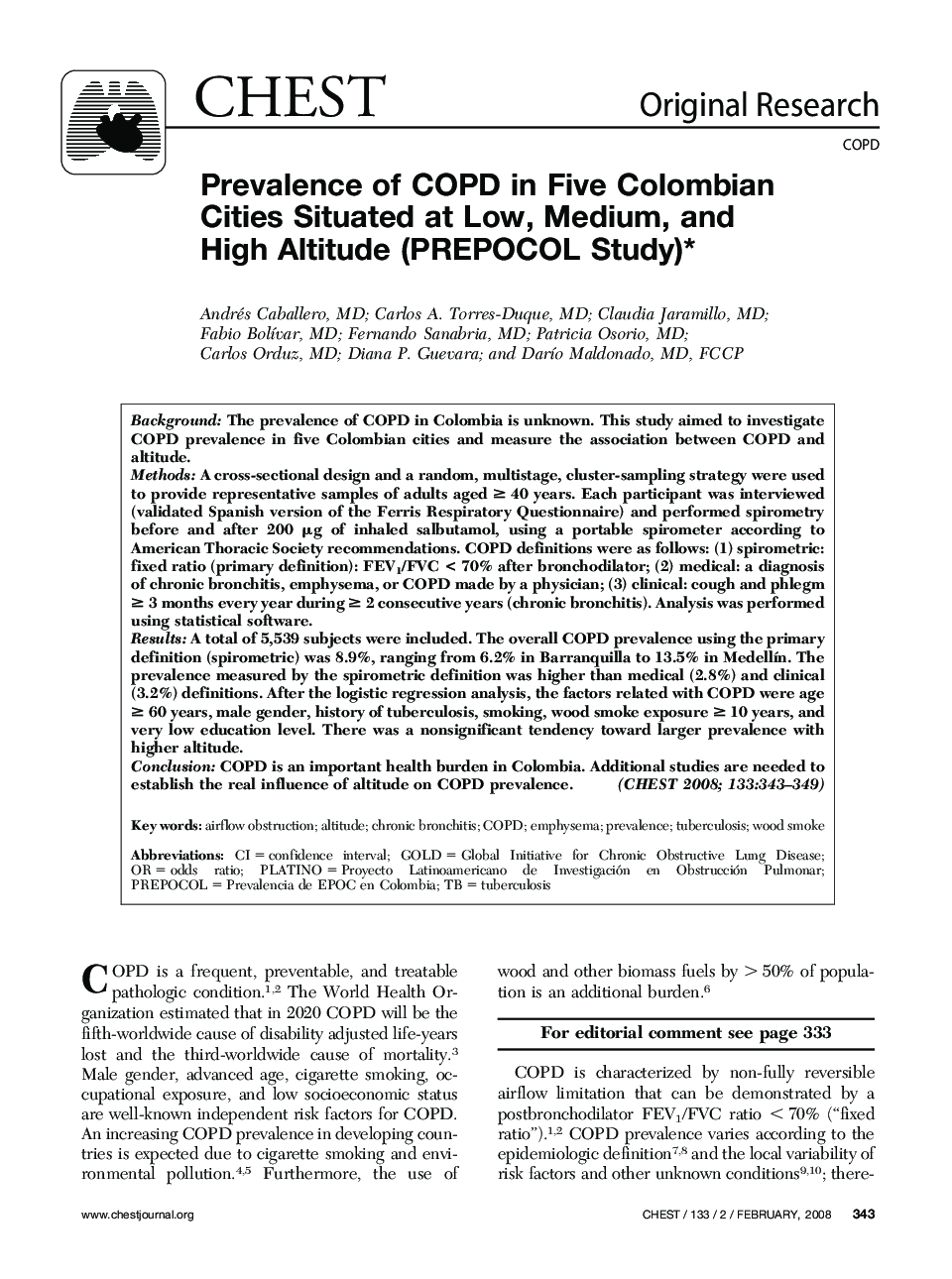| Article ID | Journal | Published Year | Pages | File Type |
|---|---|---|---|---|
| 2904198 | Chest | 2008 | 7 Pages |
BackgroundThe prevalence of COPD in Colombia is unknown. This study aimed to investigate COPD prevalence in five Colombian cities and measure the association between COPD and altitude.MethodsA cross-sectional design and a random, multistage, cluster-sampling strategy were used to provide representative samples of adults aged ≥ 40 years. Each participant was interviewed (validated Spanish version of the Ferris Respiratory Questionnaire) and performed spirometry before and after 200 μg of inhaled salbutamol, using a portable spirometer according to American Thoracic Society recommendations. COPD definitions were as follows: (1) spirometric: fixed ratio (primary definition): FEV1/FVC < 70% after bronchodilator; (2) medical: a diagnosis of chronic bronchitis, emphysema, or COPD made by a physician; (3) clinical: cough and phlegm ≥ 3 months every year during ≥ 2 consecutive years (chronic bronchitis). Analysis was performed using statistical software.ResultsA total of 5,539 subjects were included. The overall COPD prevalence using the primary definition (spirometric) was 8.9%, ranging from 6.2% in Barranquilla to 13.5% in Medellín. The prevalence measured by the spirometric definition was higher than medical (2.8%) and clinical (3.2%) definitions. After the logistic regression analysis, the factors related with COPD were age ≥ 60 years, male gender, history of tuberculosis, smoking, wood smoke exposure ≥ 10 years, and very low education level. There was a nonsignificant tendency toward larger prevalence with higher altitude.ConclusionCOPD is an important health burden in Colombia. Additional studies are needed to establish the real influence of altitude on COPD prevalence.
